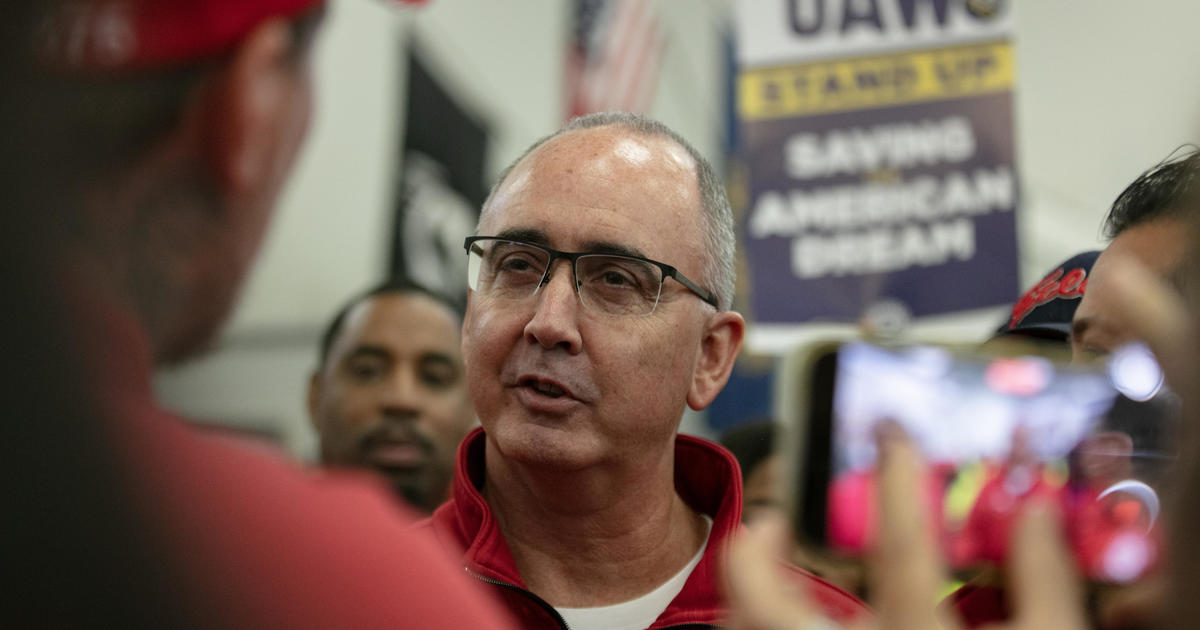Where Were You During The Blackout Of 2003?
DETROIT (WWJ/AP) - About 50 million people lost power Aug. 14, 2003, when a tree branch in Ohio started an outage that cascaded across a broad swath from Michigan to New England and Canada.
Commuters in cities had to sleep on steps, hitchhike or walk home as trains were rendered powerless and gas pumps stopped working; food spoiled as refrigerators and freezers thawed; jugs of water sold out as supply plants lost their ability to supply consumers; minds were set to wandering about terrorism fears less than two years after 9/11.
Ten years later, it's time to reflect: Where were you during the blackout of 2003? Are you prepared if it happens again?
Something Borrowed, Something... Black?
Lysa Stanton is still known as the Blackout Bride around Cleveland.
Ten years ago, she was handling a last-minute errand with her future husband before their wedding the next day when the traffic signals and storefronts went dark. Office workers and shoppers began streaming into parking lots.
"It was eerie," she remembered. "All of sudden everyone came out. That's what scared me."'
Instead of having dinner with the wedding party that evening, she was looking for flashlights, can openers and batteries. "To some people this was an inconvenience; to me, this was the night before my wedding," she said.
The hotel where Stanton planned to spend the night didn't have power, so she ended up at her fiance's house, eating melting Popsicles and ice cream and wondering, "What am I doing? Is this a sign?"
"I'd be lying if I say that didn't cross my mind 110 times," she said, recalling that she didn't sleep at all that night. "We laugh now; I don't think then I was doing any laughing."
She was interviewed by television news crews then, and people remember her story, including her florist. But it's mostly family and friends who still bring it up.
On Wednesday, Stanton and husband, Dave Pfister, will celebrate their 10th anniversary with friends and family. They plan on turning out the lights - for just a moment.
More Than She Bargained For
You know it's a regional blackout when ... you're sleeping on the hallway floor in your own apartment because it's packed with more than a dozen of your co-workers, roommates and friends.
Joan Vollero lived in Manhattan near the children's television company where she was working when the lights went out. So she extended an invitation to colleagues wrestling with how to get to homes farther away.
"I didn't realize how many people were going to take me up on that offer," Vollero recalled.
A band of co-workers - some of whom she barely knew - joined her at the small sixth-floor, three-bedroom walk-up she shared with two roommates. One colleague felt faint and needed a bed, so Vollero gave up hers.
"I remember it being a fun night - not a crazy night," says Vollero, now a spokeswoman for the Manhattan district attorney. "It was co-workers coming together in difficult circumstances and making the best of the situation."
Tunnel Visions
It's many New Yorkers' worst nightmare. The power goes out while you're in the subway, and you get stuck on a train in the dark with hundreds of strangers.
For Mike Markowitz, at the time a building doorman, that became reality as his train barreled under Manhattan on his way home to Queens.
Though the train got stuffy with no air conditioning, passengers stayed fairly calm as they were instructed to head to one end of the train, and then walked a short way through the tunnel before climbing up to the street, he said.
Ten years later, he doesn't recall whether they exited through a station or other stairwell, or how long it took. But he does remember walking home for the next four hours - "the longest walk I ever took in my life," said Markowitz, who now works in a courthouse.
"It was scary," Markowitz recalled this week, but "I don't think it was as scary as 9/11."
But also he remembers a good side to the blackout: "It brought a lot of the people together in the city."
Office Sleepover
The outage knocked out the power at Charlie Finan's house in Connecticut, but it did little more than force a reboot of his computer at the New York city offices of investment firm Bear Stearns, which had its own electricity supply.
With commuter trains out of service, Finan, 69, and many colleagues spent the night at the office in Manhattan, visiting restaurants holding "fire sales" to get rid of food before it spoiled.
His family in Danbury, Conn., meanwhile, spent the night in darkness.
"They knew I was OK. They just put up with it," he said. "There wasn't much we could do."
In the morning, he caught a train home to take a shower.
Under Pressure
As unnerving as the blackout was for everyday people, imagine if you were in charge of a part of the electrical grid just next door.
On Aug. 14, 2003, that man was Mike Kormos, vice president of operations for PJM Interconnection, the group in southeastern Pennsylvania that oversees the electric grid for 13 states.
Kormos was at a meeting away from his office when a PJM administrator called and connected him to a shift supervisor, who told him there was a blackout to the north.
"I thought he was kidding," Kormos said. "I've been 25 years on this job and never got that call, and hope I never get that call again."
Philadelphia and its surrounding region was largely unaffected by the blackout because PJM was able to continue transmitting power while managing waves of power fluctuations. Had the blackout spread to the area, millions more people would have been affected.
"Because it was on the heels of 9/11, it was a little scary," Kormos said, "because we didn't know what had happened."
Into The Future
Would you be ready if something like the '03 blackout would ever happen again?
FEMA says a basic emergency supply kit should include: One gallon of water per person per day for at least three days; at least a three-day supply of non-perishable food; a battery-powered or hand crank radio. It's also good to have a first aid kit, local maps -- and a whistle to signal for help.
TM and © Copyright 2013 CBS Radio Inc. and its relevant subsidiaries. CBS RADIO and EYE Logo TM and Copyright 2013 CBS Broadcasting Inc. Used under license. All Rights Reserved. This material may not be published, broadcast, rewritten, or redistributed. The Associated Press contributed to this report.



